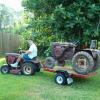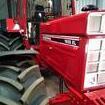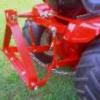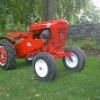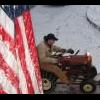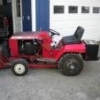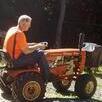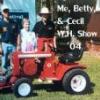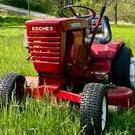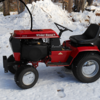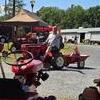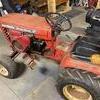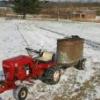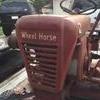Leaderboard
-
in Posts
- All areas
- Markers
- Marker Comments
- Marker Reviews
- Articles
- Article Comments
- Article Reviews
- Classfieds
- Classified Comments
- Classified Reviews
- Wiki's
- Wiki Comments
- Wiki Reviews
- Blog Entries
- Blog Comments
- Images
- Image Comments
- Image Reviews
- Albums
- Album Comments
- Album Reviews
- Files
- File Comments
- File Reviews
- Posts
-
Custom Date
-
All time
November 28 2011 - November 27 2024
-
Year
November 26 2023 - November 27 2024
-
Month
October 26 2024 - November 27 2024
-
Week
November 19 2024 - November 27 2024
-
Today
November 26 2024 - November 27 2024
-
Custom Date
02/17/2024 - 02/17/2024
-
All time
Popular Content
Showing content with the highest reputation on 02/17/2024 in Posts
-
14 pointsYou know those people that have too many projects?? Yeah me neither! Another tractor added to the heard. Case International 585 with canopy/sunroof. It's a 60-ish horsepower tractor with very limited electronic gimmicks. Has a nice tight turning radius. It was built in Doncaster from 1985 to 1990 and the hourmeter says it has ran 4700 hours since then, I'll take that with a grain of salt though. Plan is to use it for all kinds of jobs around the house and barn/stable for my gf's horses. Ofcourse it is not a new machine so there are things that will need looking after but all the basics are there. Pictures you say? Sure!
-
12 pointsHiller Yard Hand Tractor The Yard Hand, built by Hiller Engineering Corporation in Redwood City California, is a cute little yard tractor with a few unique features and an intriguing backstory. The Yard Hand is powered by a Power Products model 170, 1 1/3 horse power 2 stroke engine. It weighs only 135 pounds and was made from1954 to 1956. Hiller marketed the tractor under their own name painted red and supplied the tractor under the Craftsman name painted baby blue for Sears and Roebuck. Roy Rogers, king of the cowboys, was the Sears spokesman for their tractor. The most unusual option offered for the Yard Hand was a 10” table saw which was driven by the tractor’s engine. The hood had a large slot in it to allow the belt being routed to the saw. The person behind the Yard Hand is the most fascinating part of the story. Stanley Hiller Jr. was an aviation pioneer and had a love for all things mechanical. At the age of 8, he removed the engine from his family's washing machine and attached it to a homemade go-cart that he rode around his neighborhood. By the time he was 12, (1936) he was producing gas-propelled toy racing cars that sold for $28 ($ 620 in 2024 money) each and formed a company, Hiller Industries, which employed 16 youngsters and 2 adults. That enterprise brought in $100,000 a year. To produce the miniature cars, which could run at 60 miles an hour, he, and his father, who was also an engineer and an inventor, built a die-casting machine. When he was 15 Hiller designed the world's first successful coaxial helicopter, and produced a working model. A coaxial-rotor aircraft is an aircraft whose rotors are mounted one above the other on concentric shafts but turning in opposite directions I’m not sure what you were doing when you were 16 but Hiller went to the Pentagon and presented his design for the XH-44 "Hiller-Copter" to the U.S. Army. They were so impressed the Army adopted Hiller’s design and gave him a draft deferment during World War II. At 17 years old Hiller established the first helicopter factory on the West Coast. A year later, July 4, 1944, he tested the XH-44 at the Memorial Stadium, University of California in Berkeley, where he had been admitted as student at age 15. This initial test was followed by a successful public demonstration on the Marina Green in San Francisco adjacent to the U.S. Army's Crissy Field a few months later. Hiller dropped out of the University of California, Berkeley in his freshman year after a professor told him his design would never work. Based on the Army’s acceptance of his design Hiller sold $1 million of his company's stock and went to work full time on developing his XH-44, the Hiller Copter, which now hangs in the Smithsonian Institution. In 1949, he flew his craft across the country, bound for Wall Street, where he buzzed by the windows of banking and brokerage houses that had refused to invest in his company, an adventure that was widely reported at the time. The US Military asked Hiller to present a concept for an elevated platform to be used by solders in the field. Hiller Aircraft constructed a series of flying platforms for the Army-Navy program. The pilot simply leaned in the desired direction and the platform would follow. Hiller Aircraft incorporated twin counter-rotating propellers in a round housing (ducted fan). Sixty percent of the platform’s lift was generated by thrust from the counter-rotating propellers and 40% was generated by air moving over the ducted fan's leading edge. Thankfully this platform was never deployed on a field of battle, the operator would be a sitting duck in my opinion. Hiller left the aviation industry to pursue a second career as a company turnaround specialist in 1966. His strategy was to become chairman or chief executive officer, and not take any compensation until the employees prospered from the turnaround, and the company's shareholders realized their promised returns. One of Mr. Hiller's most successful turnarounds came close to the end of his career. In 1986, when he was 62, Hiller convinced Borg-Warner to spin off to shareholders its failing York International, one of the world's largest air conditioning firms, and put him in charge as CEO. A year after Mr. Hiller took over the company posted a five-fold increase in profits, a 130% rise in stock price, and a stable employment. By 1991 York was once-again an industry leader. His helicopters were used by the French for jungle rescues in Indochina and by the United States Army in the Korean War. There the helicopters were used primarily for medical evacuation, later becoming familiar to the public through the television series "MASH." Stanley Hiller was a most interesting man and I have no idea why he decided to build the Yard Hand, but I’m sure glad he did. I don’t know how many lawn tractors have their own jigsaw puzzles.
-
9 pointsThe question about opinions regarding routers in another post prompted me to write this one, since not only I have used them extensively in my career but I have many times been asked why I own so many and why my choices. In my line of work aside from drills they were the most used power tool. From laminate trimming , rabbeting, molding, chamfering , lock mortising, etc, etc, they are indispensable for their speed ,versatility and general utility. They were used daily many times entire consecutive days on end. Because of such an extensive usage it became evident what models and types were not only the most reliable but also comfortable and above all safe since i did things with them that most people never have the need for. They were even used to undercut doors ,thing most unheard or snubbed on by some , but when you are dealing with a $10,000.00 custom made door with exotic veneers , a circular saw is the last thing you want to put on it for reasons that can be explained. Wearing them out, damage from dropping, and the fact that many times several individuals would use them and not be so kind to them were all also facts in deciding what was best. As far as price it quickly became evident as it always is that one gets what one pays for, so it was the least important factor since money saved on a tool is many times money lost on a job due to break down or difficulty in use or and setup. The ones I own now are vintage since they have proved themselves just in the fact that they are still here and as good as the day they were bought so there is no need to buy a new one with the latest frills which many times amount to nothing. I have used them and quite honestly with one or two exceptions I am not impressed. There seems to be a necessity to reinvent the wheel or dazzle with features that quite honestly may be impressive looking at , reading about but when it comes down to actual real use mean nothing. Almost like a Wheelhorse compared to new big box store models. The important things to me in a router are the following in the order they are stated. 1- Safety. Where is switch located and how fast can one get to it? Do I need to take my hand off handles to shut it off or start it? Does switch location change with adjustments? 2- Comfort. How comfortable is unit to use? Is it well balanced? Is it top heavy? Does it vibrate excessively? Can it be used comfortably for an entire day? 3- Adjustability. Do they hold hour after hour of usage. Can adjustments be locked in by hand alone ? Can it be adjusted safely while running without taking one’s hands entirety off handles? If so are adjustments smooth and predictable or are they jerky or stiff? 4- Durability. How well built is it? How durable is base? Will an occasional drop be catastrophic to the base and therefore to routers accuracy? Are adjustments precariously exposed prone to damage? 5- Flexibility and accessories. How available are accessories such as special guides, template guides, collets, etc. Are they proprietary or universal? Do most molding bits fit in base or base needs to be modified? I own quite a few routers since they are dedicated to specific functions or cutters, but will list only a few since they are always Makitas, Dewalts ,Porter Cable or Rockwells. I will stick to full size routers and not trimmers I’ll start with my favorite ones and their qualities. Plunge routers are my favorites. They are the most versatile and if a good one the most accurate. Makita 3612 BR. Japan made.In use since 1986 This router embodies everything I have mentioned above. Perfectly placed and oriented handles and everything in reach of right hand. Switch conveniently and safely located next to your index finger. Can be switched on and off without removing hand from handle. lock also conveniently located again adjustable while holding handle. Adjustments are easy and smooth. More so while router is running. Preset depth stops also able to be operated without releasing handle Router is perfectly balanced regardless of adjustment. Handles are placed at router’s center of gravity making for steady totally controlled use. Large guide with micro adjustments , sturdy well placed posts. Just about any cutter fits through base Unique template guide system easy to install and remove which will stay securely attached unlike most others perfectly concentric with base and shaft. Lockable shaft and high quality wrench 2-1/4” plunge capable as per manafacturer plunge capability actually able to be stretched safely to 2-7/8” allowing longest available cutters to be used Base is perfectly concentric to cutter which is not so with many. Newer models also have a flat spot to be used with a guide. Phenolic bottom perfectly aligned with base. Makita 3612 BR also made in Japan in use since 1992 This router has always been adapted to my router table. It is absolutely incredible the hard use that this machine has had. It is always used with large cutter’s sometimes entire days on end . Same bearings and brushes . A testament to its quality. Besides removing handles i adapted a height adjustment from an older model to make it convenient under table. It is easily adjustable just with finger tips as shown. Type of cutters this router has lived with all of its life. US made Dewalt type 1 of this model.Had it probably 25 years. Good solid reliable fixed base router. Sturdy construction and comfortable. A little top heavy but better than most of this type. Another favorite Good adjustment system keeps motor in same orientation and keeps switch in same place next to right hand.precise adjustments which stay put. Bottom of bases on this type of router are terrible. Cutter hole always too small and phenolic base rarely concentric to cast case and therefore cutter. Clear plexiglass bases remedy that and allow greater visibility. I have several separate bases for these models dedicated with different template guides Dewalts and Porte Cable use a standard template guide. Great availability and size choice but problematic due to low quality bases which are also inconsistent in thickness. They are difficult to install or remove quickly sometimes requiring using channel lock and getting loose while usage from vibration. Holes for them in bases are also always oversized allowing guide to favor one side or other reducing accuracy important such as when routing inlays . Bases on these routers are notoriously fragile as evidenced in the router cemetery here. The good is the different size availability Old Rockwell also probably over 30 years here. A work horse dedicated to precise edge trimming or cleaning of MDF or composite materials using it with a dedicated fence. Well built but not a good design which I will get into on next one. The best thing about it is the handle providing great control specially how it is used. I made rectangular base for stability and accuracy to be used with dedicated fence. Last but important for all the bad things present still today in many. Old Porter Cable probably here for 20plus years. Good motor but very bad design. Extremely top heavy. Very hard to control and use. if used with intended fence ,posts are too close together making fence unstable and flexible. Fence posts are also too thin for routers weight. Plastic top unforgiving to the slightest drop. Motor twists on base to adjust height. Typical of this brand . Effect is that places switch always either on wrong side or away from right hand. Not an easy router to control with one hand. Same feature makes adjustment erratic and unable to achieve any type of precision. Rotating motor also creates more lack of precision in base already not concentric with cutter. Totally unpredictable. Not good for precision work. Tightening system although rugged looking does not lock or hold well needing a tool so one is sure that motor will not come loose. Never use a router of this design in overhead operation . Outright dangerous.
-
9 points@Handy Don asked me what source(s) were used to put together a Tractor Trivia post. The mother source is a listing of tractor manufacturers on Wikipedia, from there it all depends on what I trip over along the way. https://en.wikipedia.org/wiki/List_of_tractor_manufacturers For the Hiller Yard Hand post, it all began with the “Atomic Babe” post that I did a couple of weeks back. I was looking at photos of the Atomic Babe and came across one that had a strange little yard tractor with a table saw on top of it. I saved the photo and referred to it later. Doing searches with key words Tractor and table saw I found some rather vague references to a Yard Hand then searched Yard Hand tractor and found an image of an advertisement for the Yard Hand (along with a lot of useless posts on various internet tractor sites). The advertisement had a lot of good information that could be used to stitch together a couple of worthwhile paragraphs. The one thing that made me curious was the manufacturer was Hiller Aviation, seemed rather strange so I searched that name and found a Wikipedia post on the company but nothing to tie it to the Yard Hand. Stanley Hiller was listed as the founder of Hiller Aviation so I searched his name and the gates to trivia heaven opened. The York Air Conditioning turnaround, The Army Hiller-copter and flying platform, and so on. The most informative piece of the puzzle was his obituary which was full of wonderful personal history telling who Stanley Hiller was, not just his accomplishments. Most on-line tractor sites do provide a little information on a specific brand/model. I will highlight, copy, and paste them to a “Word” document and sort out the worthless posts and compose a couple of paragraphs from them. Most tractor magazine articles are worthless for trivia sources. They are interesting to read but don’t have a lot of data in them. Advertisements and sales literature is frequently the best source of accurate information. Once I have the basic information it becomes a matter of letting my curiosity guide me to posts that will provide the icing on the cake. By the time I have gathered and edited the information I can’t remember where it came from in most cases. Here are a couple of base-line sources that have been used for multiple posts. https://www.farm-equipment.com/articles/4269-timeline-of-ag-equipment-firsts https://nwtractororphans.wordpress.com/ https://pioneervillage.com/ https://www.agriculture.com/machinery/ageless-iron/lawn-garden-tracts_565-sl29247 I avoid doing a cut and paste so Red Square doesn't get in hot water oved copyrights but incorporating information gleaned from other sources is acceptable. Curiosity and dumb luck are the two keys to researching these posts and I am enjoying it, glad you do too. If I have missed something please feel free to ad to these threads a @gwest_ca did a couple of days ago.
-
8 pointsPicked this little guy up last night, I didn't really need another 854 but I can't pass up a unmolested round hood. Drove a few hours for it but it was worth it, met another wheel horse enthusiasts who was a really nice guy, he even threw in a snow plow for it. I have to dig out a set of 6-12 tires out of the barn for it and see if It'll run. Should be a nice project
-
6 pointsIf you can at least knock the loose rust off, Rust-Oleum red oxide primer will stop the rust from getting worse. I've used it on rusty stuff as a primer coat down here in humidty central with no break through rust on some tractors over 20 years ago.
-
6 pointsSo I have fought this confounded hood for about 3 days now. Still got some dimples in the "brow" up front to fix, but at least it's primed now. All the big dents are banged out. The PO had put something like polyurethane on it with a brush. Problem was he left it in the rain for a while, and it had thousands of little rust filled blisters all over it. I've used paint stripper 4 times and scraped it off each time. Burned out my grinder and wire brush on it, because the stuff just balled up when sanded or brushed. After today's "strip and scrub" session, I got down to factory paint. Easy from there... So I gave her a test fit. Paint tomorrow....
-
5 pointsAnd that's what keeps us all out of trouble. Enjoy your new tractor!
-
5 pointsArticles and people like Hiller makes me think about my journey and how things were once. I worked with a guy that had all kinds of ideas. His problem was he could not finish one or see it through to the end. He would get it started and jump to another idea. A lot times I would ask him to take it over and finish. i wasn't shy either, with out of the box thinking. So it all fit nicely. Hiller was so blessed to have the ingredients for success. A great mind, and successful engineer father, money, and the perfect atmosphere to think. What a good deal. Another thought is the tractor with the saw on top. I could just see my dad asking my mom about buying one. Of course her reply.....NO! Then the old man would say, you know if I had one of those, I could finish those shelf's in the pantry. Hmmmmm he increased his chances. It was a time of practicality. We had one car. Used it to go to work, go to church, go to the store and that was it. We walked everywhere else. Not much joy riding. A transistor radio, one TV 2 and !/2 stations. Rich at first glance I thought it was about peddle tractors. Thinking with my eyes. Thanks again for taking your time to put it all together, it is a lot of work.
-
4 points
-
4 points
-
4 pointsYa that’s why I only tried it as a last resort. I am going through the fuel system totally next. Thanks I will let you all know!!
-
4 pointsShould be a good one. Decent reputation with the brand over here.
-
4 pointsThe steering wheel needed some finish filing, so I broke out a tool that is new to me but second hand from some Sheffield engineering firm. It's a Diprofile filing machine. Powered by a dentist motor it basically grips a needle file saw or even scraping tool and operates as a reciprocating tool. A skilled operator would use it for sinking and working on precision tooling. I use it to make filing a bit easier on the hands. I bought it quite a few years ago but it has sat patiently in my tool cabinet, waiting it's moment to shine. It would have been a very expensive item when new but I got it for a song from a dealer who had no idea what it was.
-
4 points4.5" angle grinder and these bad boys, they self clean pretty well, if im doing something pretty gummy i keep a brick or block next to me so I can just touch it off to clear the wheel. This fender had 3 or 4 coats, and rust, took about 45 minutes to do the whole thing and about 3 wheels, the finish was good enough to wipe down with spirits and prime.
-
3 pointsYes It's a new cover, unfortunately the seat pan under it isn't correct so I'll be digging through the barn for the right one. The gentleman I bought it from was starting to fix it up but he couldn't get it to run. I'm pretty sure the starter generator is getting weak, it turns the engine over slow, so I'll order a rebuild kit for that and go from there. Round hoods are getting harder to find here too and when I saw it wasn't all cut up I knew I had to save it. I'm supposed to be thinning out the herd not adding to it lol at least I have a tractor supporting wife
-
3 points
-
3 pointsI bought a 48” SD in 1984 and it was under. I took it off almost immediately because I thought it impeded the dispersion of the clippings. Look at me using big words, like I’m all smart or something 🤣🤣 Don’t be fooled 😂
-
3 pointsTake it easy with the starting fluid, it can cause damage if used in excess. Gasoline in a spray bottle is a safer option. If this is a new to you tractor that may have been sitting for a while, it is best to clean the entire fuel system. @ebinmaine can you hook this member up with that "new to me tractor" check list?
-
3 pointsUpdate: I dragged my C-175 out of the backyard and into my shop today. This tractor hasn’t ran in years. Purchased a new battery, filed the points, cut the fuel line so it wouldn’t suck up crappy fuel and sprayed some gas down the carburetor. Vroom! It started right up! Then I drained and cleaned the tank, replaced the fuel line and added a filter. Next I topped off the transmission, then drove it around. I have to say that I was one happy camper. The transmission is nice and tight and the hydraulic lift works fine too. I’m not sure but this may be on its way to a full blown restoration? Also more good news, @Sparky I found the jacket for the picture!
-
3 pointsGentlemen, Today I replaced the motion control linkage seal and changed the transmission fluid on the ‘68 Charger 12. No more leak!
-
3 pointsGood luck don -- sounds like awesome C175 project idea -- if anything like your results of your beautiful restored Workhorse I am sure the 175 project will be special -- I'm wondering if you plan to start a GOFUND ME page to buy the brochure guys jacket and shoes? I was able to acquire a couple C175s a few years ago -- an 83 Series 1, and a 84 Series 2, -- both apparently their original black hoods, plus the raised plastic seat pan fenders -- I have done some rehab on the 84 Series 2, but not much on the 83 Series 1 - both are in use -- that twins certainly have a great sound. Hoping to keep both running and in good condition - Bill
-
2 pointsI hear the C-175 is the feature tractor this year and the WHCC is looking to recreate the picture of one of them with the front mount mower carrier and 48” deck. Is anyone going to be able to put this together? I have this tractor, but it needs a full restoration. I also know where I can get the mower carrier and have a few 48” decks that need restoration. Plans for the total restoration may be on the back burner as my oil burner needs to be replaced very soon. Depending on the cost of this may dictate if I can pull it off. I won’t do it if I can’t do it 100%, I can’t do it half ass, that’s just me.In my opinion I think the black hoods are sharp looking tractors.
-
2 pointsI have gotten around to tackling the 704 I rescued a while back. It was totally rusted with front tires rotted on rims. Using Evapo Rust, Kroil and a lot of patience I have gotten almost every bolt removed with no broken bolts.Soaked the frozen throttle cable in evapo rust and got it working. Also got the stuck exhaust valve free as well as carb choke butterfly. Making progress on the engine but not sure what to do with the metal on the tractor. Tried some wet sand with 1000 grit and it just keeps coming up rusty, no paint hardly left. Not really interested in a full on sand and paint restoration but not much for patina left either. Just will be a tractor for kids to play on, no worker or show tractor. Any suggestions what to do?
-
2 pointsJust before I got "retired", I grabbed a couple lengths of double #50 roller chain with this in mind. It was getting scrapped anyway as everything is belt drive now. Kinda' wish I grabbed some #40 for Ol' Rusty. You guys with chain, what do you run for pressure? Right now I've got 10psi.
-
2 pointsGiven your stated intended use, that's what i'd do...
-
2 pointsYou'll love em, they dont gouge either which is nice. They will hook an edge so always keep the away side in mind when doing edges.
-
2 points
-
2 pointsLots of bigger tractors had them as an accessory, so it stands to reason someone adapted it to work on your 315-8. Maybe aftermarket for any tractor. Looks good too!
-
2 points@sjoemie himself real full size tractors , are very solid , as you well know , a thorough going over for function and related wear , is what you want to check over . with your background , i,m sure that tractor is glad to be where it is ! your previous responses says it all about you , Pete
-
2 pointsWhile doing some work for Case, I got to visit the Doncaster facility as they were building the model that followed that one. I was impressed at the quality of their marketing, engineering, and production staffs as we discussed the differences between mid-western USA farming and UK/Euro farming. They joked that in the US farms were so large that you could plow one way in the morning, then turn around, have lunch, and then plow home. They were serious pointing out that in the UK, plots were often small and bordered so that farmers were constantly making sharp turns. Hence that market’s demand for still powerful but much more nimble and compact tractors and implements. A real education for me.
-
2 pointsHere ya go! It seems pretty solid. Hoping it holds up until I can get new cushion and back.
-
2 pointsI'm a convert to these as well. There are different grits but the most aggressive (purple in the brand I use) is quite gnarly while the “smoothest” blacks leave a very nice surface. When I was using flux core welding wire, these were my go-to cleanup--not only the slag, but they took off minor imperfections in the metal.
-
2 pointsO boy, time to install Recaro Racing Seats in ALL of the Pullstart families Automobiles.
-
2 pointsI have a bunch of WH decks and on the 42'' the chute goes under and on the 48'' over on the SD decks. @Horse Newbie Both were bought new.
-
2 pointsThere may be an indirect relationship between the Kalmar Ottawa terminal tractors and the Ottawa Garden Tractor since they were both built in Ottawa, KS. E.L.Warner was the man behind the garden tractor but Ottawa is a small town so who knows. I am putting the finishing touches on the Ottawa Garden Tractor and others whos roots are intertwined. Like I said before, you go looking for one thing and trip over another which leads you to another.
-
2 pointsFortunately there are many K-model engines and fans of them out there. So many parts are readily available both OEM and after market. If you know the part number for an item you can get it many places on the WEB. Here is a link for the Kohler manual. https://resources.kohler.com/power/kohler/enginesUS/pdf/tp_2379.pdf
-
2 pointsHere ya go: No apologies for asking questions. That's how we learn. Click the link I posted above and peruse the list. That'll give you a series of things to check over.
-
2 pointsHad to go rescue this 854 for a Benjamin this evening. It's a project, but I've had worse. Came with a wheel horse spike tooth harrow that bent and missing the hitch. I think the engine is newer than a 64 at least thats what the PO said.....it's free and the gears all seem to be there. Any 854 experts here wanna chime in? Probably gonna end up as a restoration!
-
2 points@Pullstart can provide either cowboy boots or flip flops... steel toed of course...
-
2 points
-
2 pointsI have a C-175 hood in good shape that I’d be happy to donate to the project. Personally, I don’t like the looks of the black hoods. It’s not so much the hood style, I just don’t like the black.
-
2 pointsWhen you speak of your oil burner, are you talking about your home heating system, or your daily-driver Wheel Horse that needs a ring job?
-
2 pointsStill faffing about as we would say over here. I moved a couple of steel cabinets to make a little more room in the build area. Then I didn't like the grab handles that were included in the kit. Full size they are made of steel tube, shaped to a D handle. They're designed to allow folk to lift the back end up if it gets stuck in mud and they rejoice in the name of "Bog handles" The kit version we're laser cut from flat steel plate. So on went the old thinking cap and out popped these. Lengths of 3/8 copper brake pipe, bent to shape and fixed with M1.6 machine screws. Thay are a little bigger than the kit ones and if they are too big when I check the outriggers they mount on I will make some a little smaller. As I mentioned scale is only OK as long as things look good.
-
2 pointsI have a super nice deck carrier but no black hood nor a 48” deck
-
1 pointHold that thought, I'm starting one on some ridiculously small stuff.
-
1 pointThat’s funny you say that because I thought the exact same thing. However I don’t see any shoulder straps? 😂 I may have to start perusing local thrift shops. Are those pants polyester? Might be a little hot wearing these items at the big show 😂 Dang it @squonk I need to look for the shoes too?
-
1 point
-
1 point
-
1 point

